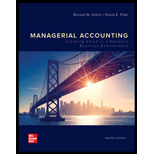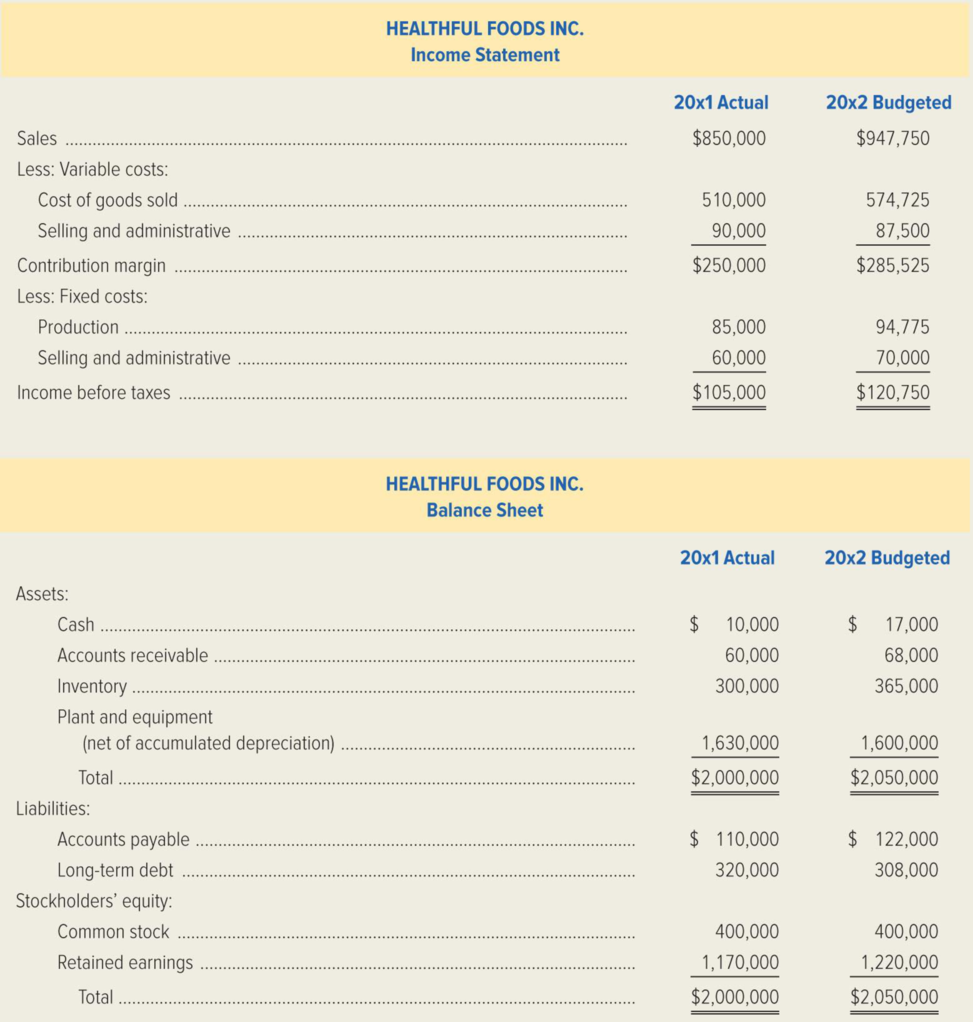
Healthful Foods Inc., a manufacturer of breakfast cereals and snack bars, has experienced several years of steady growth in sales, profits, and dividends while maintaining a relatively low level of debt. The board of directors has adopted a long-run strategy to maximize the value of the shareholders’ investment. In order to achieve this goal, the board of directors established the following five-year financial objectives.
- Increase sales by 12 percent per year.
- Increase income before taxes by 15 percent per year.
- Maintain long-term debt at a maximum of 16 percent of assets.
These financial objectives have been attained for the past three years. At the beginning of last year, the president of Healthful Foods, Andrea Donis, added a fourth financial objective of maintaining cost of goods sold at a maximum of 70 percent of sales. This goal also was attained last year.
The budgeting process at Healthful Foods is to be directed toward attaining these goals for the forthcoming year, a difficult task with the economy in a prolonged recession. In addition, the increased emphasis on eating healthful foods has driven up the price of ingredients used by the company significantly faster than the expected rate of inflation. John Winslow, cost accountant at Healthful Foods, has responsibility for preparation of the profit plan for next year. Winslow assured Donis that he could present a budget that achieved all of the financial objectives. Winslow believed that he could overestimate the ending inventory and reclassify fruit and grain inspection costs as administrative rather than production costs to attain the desired objective. The actual statements for 20x1 and the budgeted statements for 20x2 that Winslow prepared are as follows:

The company paid dividends of $27,720 in 20x1, and the expected tax rate for 20x2 is 34 percent.
Required:
- 1. Describe the role of budgeting in a firm’s strategic planning.
- 2. For each of the financial objectives established by the board of directors and the president of Healthful Foods Inc., determine whether John Winslow’s budget attains these objectives. Support your conclusion in each case by presenting appropriate calculations, and use the following format for your answer.

- 3. Explain why the adjustments contemplated by John Winslow are unethical, citing specific standards of ethical professional practice for
management accountants.
Want to see the full answer?
Check out a sample textbook solution
Chapter 9 Solutions
Managerial Accounting
- Acp Distributors purchased a cooling system for its storage warehouse at a cost of $92,500. The cooling system has an estimated residual value of $7,000 and an estimated useful life of 10 years. What is the amount of the annual depreciation computed by the straight-line method?arrow_forwardNonearrow_forwardCorrect ans please for this general account questionsarrow_forward
- The following data pertains to the direct materials cost for the month of October: Standard costs: 5,000 units allowed at $20 each Actual costs: 5,050 units input at $19 each What is the direct materials efficiency (quantity) variance? a. $950 favorable b. $950 unfavorable c. $1,000 favorable d. $1,000 unfavorable e. $50 unfavorablearrow_forwardNeed help with this financial accounting questionarrow_forwardabc general accountionsarrow_forward
 EBK CONTEMPORARY FINANCIAL MANAGEMENTFinanceISBN:9781337514835Author:MOYERPublisher:CENGAGE LEARNING - CONSIGNMENT
EBK CONTEMPORARY FINANCIAL MANAGEMENTFinanceISBN:9781337514835Author:MOYERPublisher:CENGAGE LEARNING - CONSIGNMENT Managerial Accounting: The Cornerstone of Busines...AccountingISBN:9781337115773Author:Maryanne M. Mowen, Don R. Hansen, Dan L. HeitgerPublisher:Cengage Learning
Managerial Accounting: The Cornerstone of Busines...AccountingISBN:9781337115773Author:Maryanne M. Mowen, Don R. Hansen, Dan L. HeitgerPublisher:Cengage Learning Cornerstones of Cost Management (Cornerstones Ser...AccountingISBN:9781305970663Author:Don R. Hansen, Maryanne M. MowenPublisher:Cengage Learning
Cornerstones of Cost Management (Cornerstones Ser...AccountingISBN:9781305970663Author:Don R. Hansen, Maryanne M. MowenPublisher:Cengage Learning


